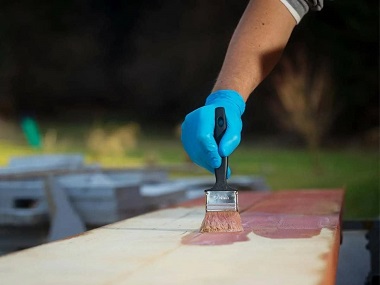Can You Put Polyurethane Over Polycrylic [answered]

Yes, you can apply polyurethane over polycrylic. But you can’t put it directly on polycrylic. Their materials are different. Therefore if you put them directly over each other their chemicals might react. So at first, sand the polycrylic base then apply polyurethane. Polyurethane contains pigment particles that bond together to form a crystal. A version of polyurethane with particles between 500 and 500,000 microns is the size needed to coat wood. Polyurethane, the slick glossy old-fashioned type, seems like a great alternative to spray-on paint.
Can You Put Polyurethane Over Water-based Polycrylic?
Polyurethane has two types – oil-based and water-based. Polycrylic is only water-based. But both polyurethane can be applied over water polycrylic. However, it’s better to sand down the polycrylic surface before putting any kind of urethane. Thus urethane will settle down over polycrylic and give you a smooth finish.
Recommended Clear, Oil-based, Durable Protective Finish
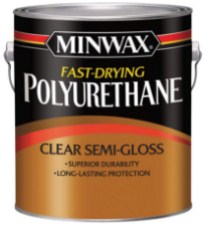
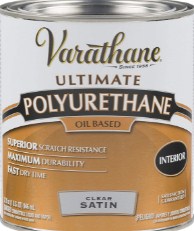
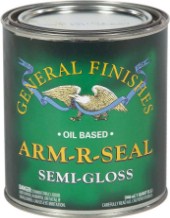
Water based Polyurethane Finish
Which Is Easier To Work With Polyurethane Or Polycrylic?

Both polyurethane and polyacrylic are good for finishing any wood materials, although there are some drawbacks of both.
Polyurethane is durable, smooth, weather-friendly, and has fewer drips. But oil-based polyurethane gives a yellowish shade which discolors the real wood’s color.
Polyacrylic dries fast, is highly glossy, and is cheaper than urethane. But polyacrylic is hard to apply as it dries fast and its consistency is runny and drippy.
So in the case of working, I guess polyurethane stands out because its consistency is better, easy to apply, and doesn’t have the issue of dripping.
But if you can avoid the drippings of polyacrylic and work carefully, it also does well and adds more beauty to your wood than polyurethane.
How To Apply Polycrylic?
To apply any kind of finish, you need some basic tools-
- Sandpaper
- Gloves
- Rubbing compound
- Respiratory protection
- Brush/roller/sponge
1. Sanding: Before putting polycrylic, lightly sand the wood. It gives you a better finish, prevents bubbling. So at first take sandpaper to sand down your wooden surface.
2. Clear the area: After sanding, you will find a lot of dust there. Take a suction or a wet cloth to clean the area. Remember not to wet the wood with the cloth, just lightly clean the dust.
3. Precaution: Before using polycrylic, wear gloves to avoid stains on your hands. Use respiratory protection if you have severe respiratory problems.
4. Open the can: Never shake it because it will create bubbles inside. Take a smooth bristled brush and dip it in the can. I recommend not to use soft brushes as their fivers can damage the coatings.
5. Gently brush the surface: It’s better to brush thinner layers as polycrylic dries fast and thick layers can be hard to even them.
6. Another coat: After putting on one coat, if you’re not satisfied, then go for another coat. But before putting another one, wait until the first coat dries completely. Usually, it takes 30 to 60 minutes to dry polycrylic. For safety, you can wait a little longer.
7. Follow up coat: After the first coat dries, lightly sand it before applying another coat. It gives more gloss to the second one. Then follow the same steps until you get your perfect coat.
8. Having the final coat: polish your surface to have a great shine. Gently rub it with an automotive rubbing compound. Be cautious while rubbing. Don’t put pressure because you don’t want to sand now.
Can You Put Polyurethane Over Acrylic Paint?
Absolutely. You can apply any kind of polyurethane over acrylic paint. The only condition is to dry the paint completely. Wait at least 1-2 days after painting. Then you’re free to put polyurethane over it. If you put urethane on the raw paint, it will result in sheer discolor. Polyurethane on paint adds smoothness, brightness, and perfection to the wood.
Polycrylic Over Latex Paint Problems

Polycrylic can be used on latex paint to add more gloss and shine to the wood. But while applying polycrylic you might face these problems-
- Too much dripping
- Running consistency
- Unavoidable stokes while brushing twice
- Uneven stokes due to fast dry
Polyurethane Vs Polycrylic Over Paint
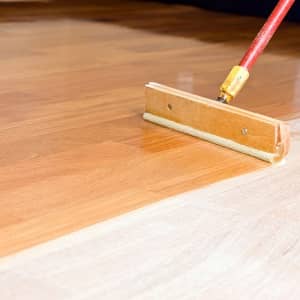
Polyurethane is durable, coats tough, and is suitable for all kinds of weather. Polycrylic is environmental-friendly, less consistent, and less toxic. It’s a little bit hard to wash.
Applying polyurethane over paint gives durability and safety to the paint’s surface. However, oil polyurethane might sometimes give a yellowish look on the paint base.
Polycrylic gives a gloss, shine, and brightness to the paint. It doesn’t have the yellow issue. One of its uniqueness lies in its easy cleansing. With only soap and water, you can clean all of it.
Putting all these aspects together, I think, polycrylic is the best choice to put over any paint. Because it doesn’t temper the color, is easy to use and enlightens the paint more.
Difference Between Polyurethane And Polycrylic
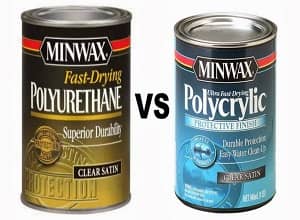
Polyurethane and polycrylic both are wood finishes and both are great in their own ways.
Polyurethane features are- its longevity, toughness, tight coat, and resistance. Polycrylic is smooth, milk coated, and less consistent.
Polyurethane is best for high temperatures and high humidity. Polycrylic is used where there is low temperature and less ventilation. It’s not good for extreme heat.
Polyurethane has two kinds- one water-based and the other is oil-based. On the other hand, polycrylic is water-based only.
Polyurethane can be stored for a long time. Polycrylic isn’t suitable for longer storage. Therefore it’s advisable to use small cans at a time.
Polyurethane drips less so it’s suitable for covering large areas. But polycrylic is drippy and so can’t cover large areas smoothly.
Polycrylic dries faster than polyurethane. It is also cheaper than polyurethane. But it can’t be used for outdoor furniture. Polyurethane is best for protecting furniture which is more likely to be worn out and open to damage.
Applying Polycrylic Over Paint Tips
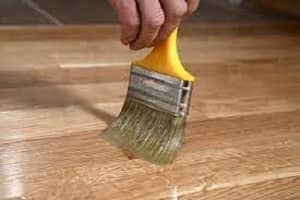
- Make sure to sand down before applying
- Clear the dust to avoid uneven stokes
- Use gloves to protect your skin
- Use smooth bristle brushes as they work really well with polycrylic
- Make sure to work in a cold environment
- Ensure air passing while applying
- Don’t work in heat as it might shrink the coats
- Never shake the bottle in order to avoid bubbles
Applying Polycrylic Over Polyurethane Guide
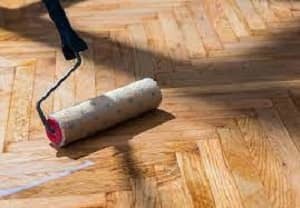
- Before putting polycrylic on polyurethane, lightly sand the wood. It gives you a better finish, prevents bubbling. So at first take sandpaper to sand down your urethane wooden surface.
- After sanding, you will find a lot of dust there. Take a suction or a wet cloth to clean the area. Remember not to wet the wood with the cloth, just lightly clean the dust.
- Before using polycrylic, wear gloves to avoid stains on your hands. Use respiratory protection if you have severe respiratory problems.
- Open the can. Never shake it because it will create bubbles inside. Take a smooth bristled brush and dip it in the can. I recommend not to use soft brushes as their fivers can damage the coatings.
- Gently brush the surface. It’s better to brush thinner layers as polycrylic dries fast and thick layers can be hard to even them.
- After putting on one coat, if you’re not satisfied, then go for another coat. But before putting another one, wait until the first coat dries completely. Usually, it takes 30 to 60 minutes to dry polycrylic. For safety, you can wait a little longer.
- After the first coat dries, lightly sand it before applying another coat. It gives more gloss to the second one. Then follow the same steps until you get your perfect coat.
- Having the final coat, polish your surface to have a great shine. Gently rub it with an automotive rubbing compound. Be cautious while rubbing. Don’t put pressure cause you don’t want to sand now.
Can You Apply Polyurethane Over The Finish?
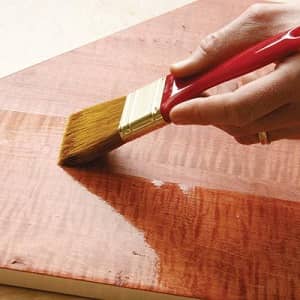
It’s all right to apply polyurethane over some finishes though not all finishes work well with urethane.
- Old polyurethane – Yes, can be applied.
- Varnish- Polyurethane looks great on this. It doesn’t damage the varnish.
- Epoxy- Yes but make sure to sand to get the best results
- Spar urethane – Apply but not directly. Not sure to get the best look, but if you sand before applying it might look good.
- Lacquer- Absolutely no. Lacquer and polyurethane don’t mix together. If applied to each other, they do more harm than good.
How To Get A Smooth Polyurethane Finish?
Sand, sand, and sand. Sanding is the only option to get any smooth finish. Try to sand after each coat before having the ultimately satisfying coat. Also, try to keep the surface clean as much as possible.
What Happens If You Don’t Sand Between Coats Of Polyurethane?
If you don’t sand, the ultimate result will be bizarre. Sanding not only gives shine to the coat but also helps the finish settle down. Without sanding, you might be able to coat the surface but the outcome won’t be as satisfying as you expect.
Are 2 Coats Of Polyurethane Enough?
Yes, two coats of polyurethane are enough to get a smooth surface. However, if you don’t reach your expectations even by this, you might add more coats. Remember to sand every coat before putting out the next coat
How Long To Wait Between Coats Of Polyurethane?
It’s better to wait 1 hour after every coat. For further caution, you can wait up to 2 hours in order to not damage the previous coat. Also, it depends on the humidity, temperature as to how long it will take to dry completely. But on a normal day, wait until the previous coat dries before applying the new one.
Polyurethane Terms
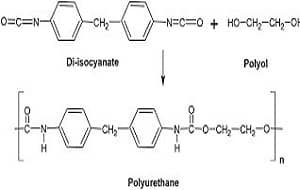
Safety- Polyurethane is harmful to health. They consist f toxic chemicals. Therefore can cause respiratory diseases.
It’s flammable. So be cautious while storing it. Don’t put them near any fire components.
Function- Polyurethane is good for furnishing wooden furniture. It’s used over various finishes, paints, and wooden surfaces. It gives a tight coat, extra protection to wooden surfaces. It also protects outdoor furniture which is more likely to be open to damages and harsh uses.
Products-
Polyurethane is used for making-
- Foam seals and gaskets
- Durable elastomeric wheels
- Seals
- Gaskets
- Carpet underlay
- Foam seating
- Furniture finish
Components- Polyurethanes are made of two major components- di- and tri-isocyanates and polyols.
Polycrylic Terms

Safety- It is kind of harmless. They are less toxic, less detrimental to health, and merely cause any human health problems. It doesn’t emit harmful chemicals.
Function– It gives a shiny, glossy, beautiful look on woods. It protects the wood. It can be used over paint and other finishes.
Products- Polyacrylics are only used for finishes such as high gloss and satin finishes.
Components- Polycrylic is made of – copolymers of acrylic acid, methacrylic acid, and their simple esters.
Polycrylic Or Polyurethane Over Stain
Stain adds beauty to wooden materials. Polyurethane and polycrylic both work well with stains. However, as usual, dry the stain first, then sand and at last, apply any one of them. 2 coats of polyurethane is enough to get a smooth finish. In regard to polycrylic, 3- 5 coats might be needed.
How Long Does It Take Polycrylic To Cure?
Usually, it takes 1 hour for any finish to cure. As polycrylic is fast drier, its surface dries in around 30 minutes. However, to dry the whole thing takes 24 to 72 hours before using it. It’s recommended to wait at least 1 day after putting in the third coat.
Can You Apply Too Many Coats Of Polycrylic?
Yes, you can. Miniwax, the popular polycrylic company advises their users to have 5 coats to get a smooth shiny surface. So obviously you can use several coats at a time.
Can You Put Minwax Polyurethane Over Minwax Polycrylic?
Yes, you can. Any kind of polyurethane can be used on any polycrylic. Just ensure sanding before applying.
Should You Sand Between Coats Of Polycrylic?
Yes, you definitely should. In order to get the glossy shiny surface, it’s a must to sand before any coat.
Frequently Asking Question
1. Can You Put Spar Urethane Over Polycrylic?
Yes, spar urethane kind of works with polyurethane. But again don’t put it directly as it might have reverse effects. If you sand the spar urethane properly, it might give a good look. But it will not be the best one.
2. Can You Use A Water-based Polyurethane Over An Oil-based Polyurethane?
Yes, it’s okay to use water-based polyurethane over oil-based. Just follow the exact steps and it won’t be a problem.
3. Will Polycrylic Be Yellow?
No, the polycrylic finish doesn’t yellow. Oil-based polyurethane does.
4. Can Lacquer Be Applied Over Water-based Polyurethane?
No, lacquer can’t be applied either on water-based or oil-based polyurethane. Lacquer and polyurethane chemicals mixed with each other react. Therefore they don’t bond well. Even if applied, lacquer won’t stick with urethane for longer.
5. Polycrylic Vs Polyurethane Outdoors
For outdoors, polyurethane stands out. Polyurethane is stronger than polycrylic. So they can take extreme usage and are less likely to wear out. On the contrary, polycrylic is recommended to use only for interiors.
6. Can You Polyurethane Over A Water Seal?
Yes, polyurethane can be used over water seals. It adheres to it completely.
Conclusion
Be it polyurethane or polycrylic, both are outstanding to furnish any wood. They add more beauty, texture, and gloss to your normal boring woods. Choose the correct finish to apply both in your interior and exterior and make your home more stunning, glittery, and comely.

